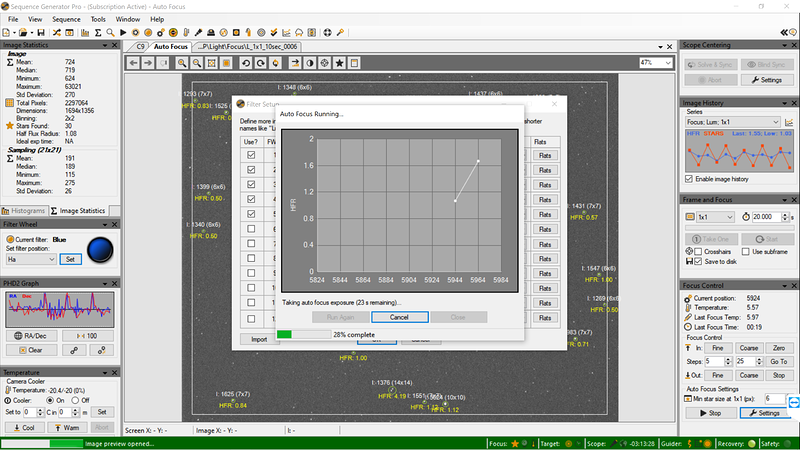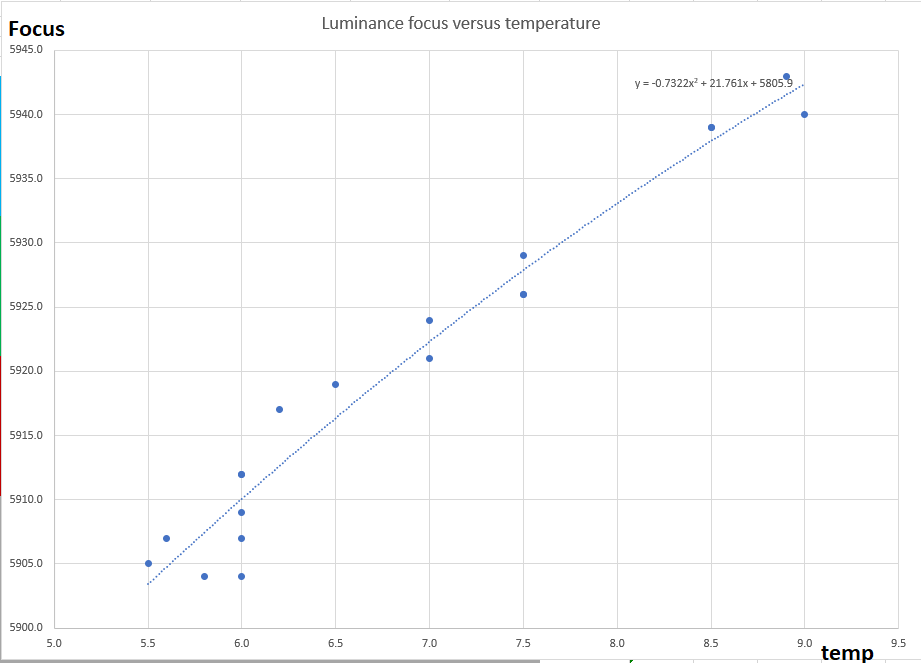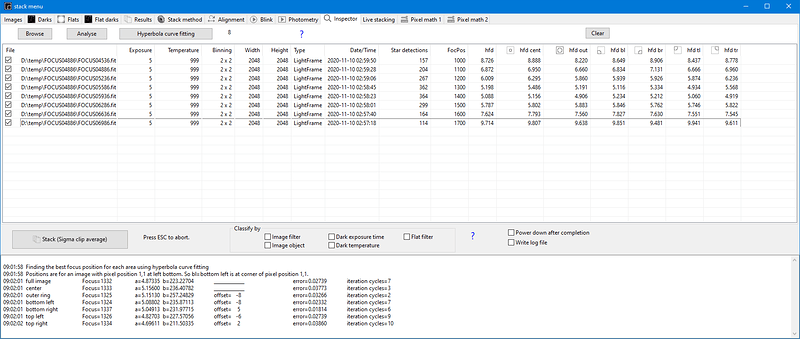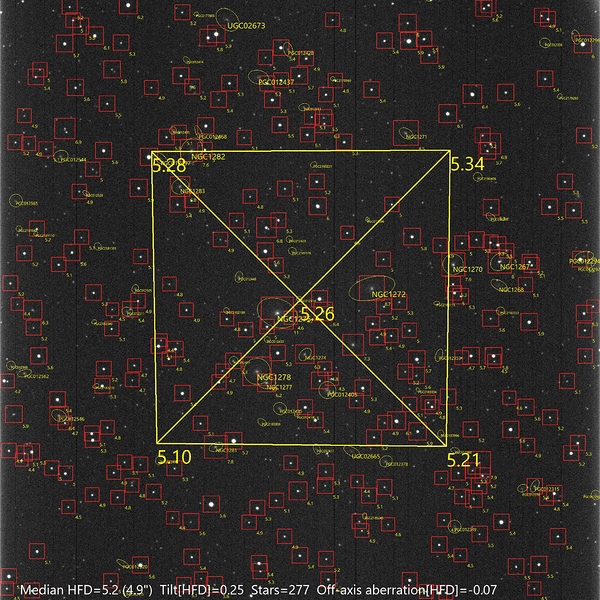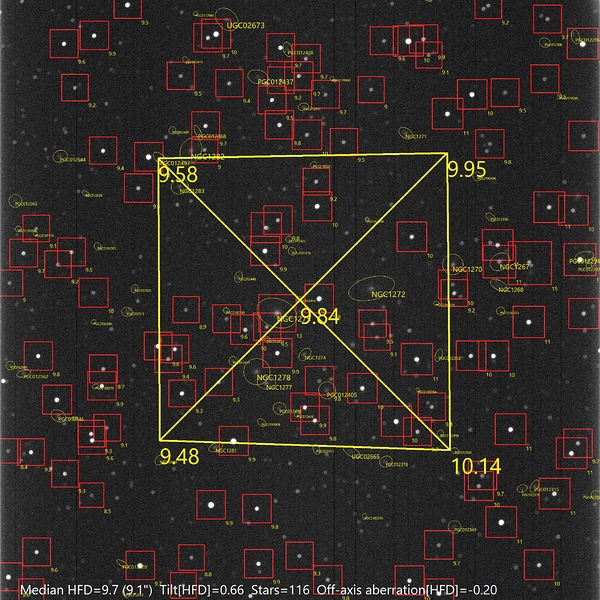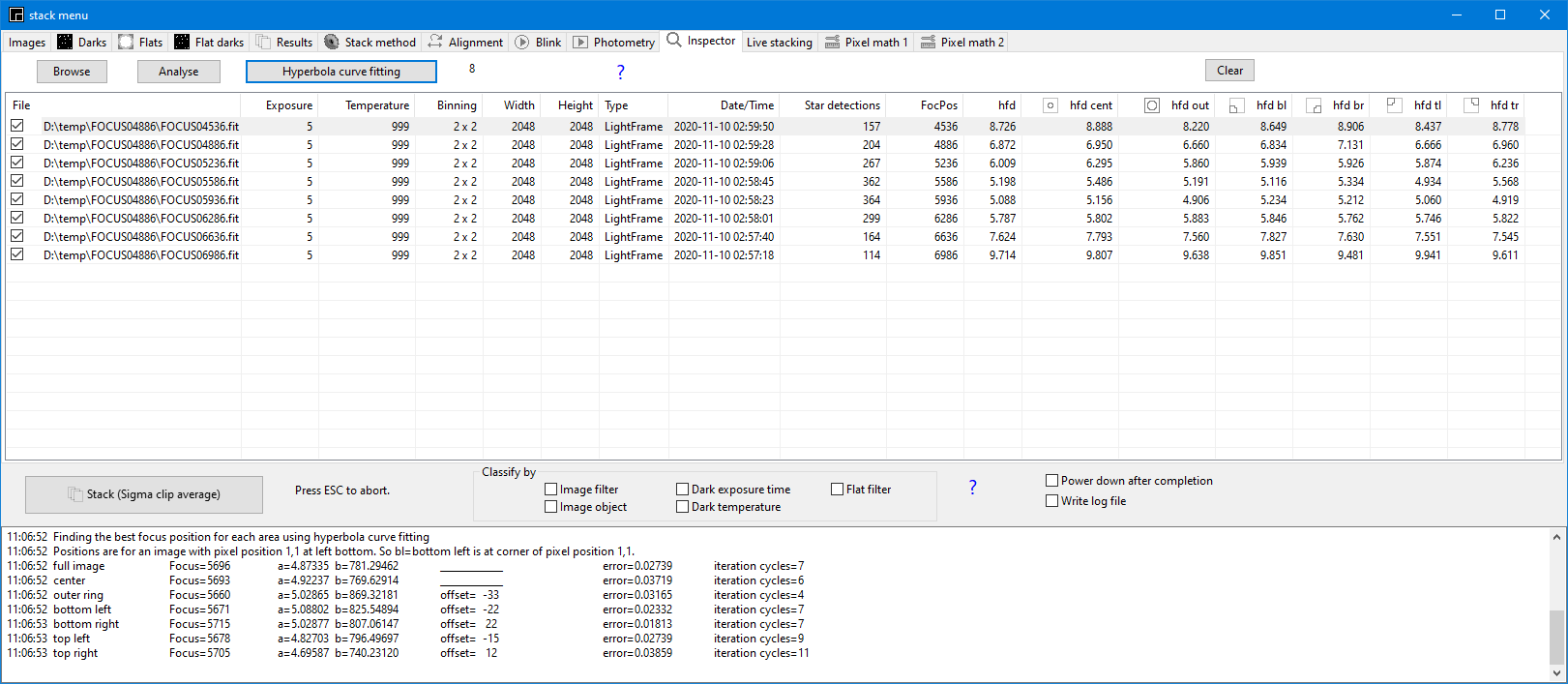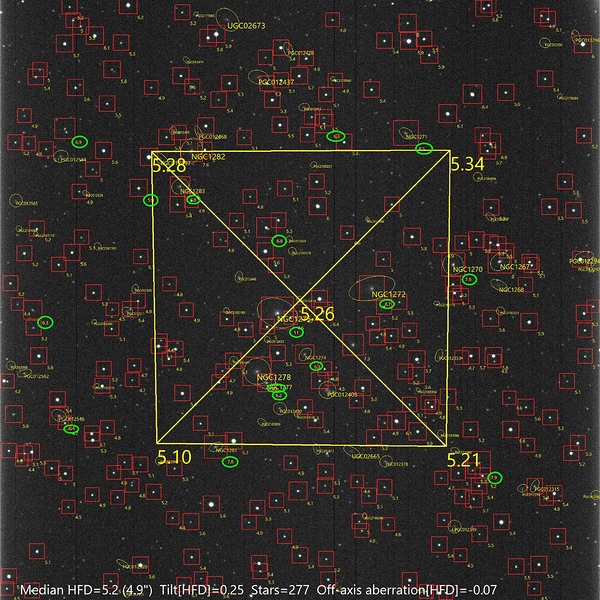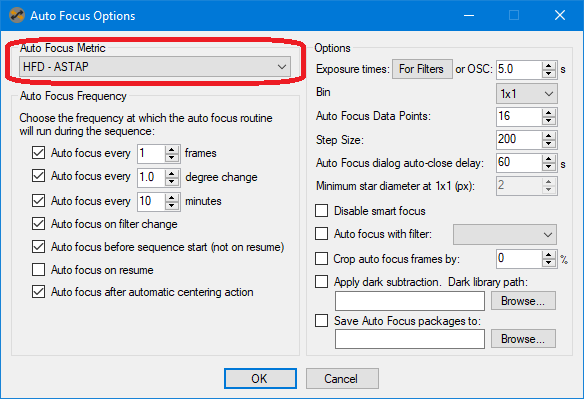OK, here are some results from yesterday evening’s AF session.
As expected, conditions were not ideal: near full moon, wind gusting but my site somewhat sheltered, and seeing likely impacted by strong jet stream winds, But notwithstanding some thin haze I was able to work continuously from c19:00 to 01:00. Luckily ambient temperature held reasonably stable for much of the period.
My first exercise was to use GoldFocus to establish what the package describes as ‘Near Perfect Focus’ for each of my filters. I managed 5 results for L (one of which I discarded as it seemed aberrant), 2 each for RGB, but only one for Ha. The results were very close for each filter (apart from the one L).
A problem with GoldFocus (I think) is it tells you when focus is good/near perfect) but does not output the actual Focuser Position or the temperature, so had to keep running out to read the LED display on my Lakeside!
When my second attempt at Ha focus with GF failed I switched over to SGP. Overall, I managed some 40+ AF runs using a sequence L, R, G, L, B, Ha). Each AF run was followed by a single 60s 1x1 exposure.
Despite the iffy conditions, no AF runs failed until the sky was completely filled with small fluffy clouds. SGP even managed to complete AF runs even when PHD was losing its guide star?
I have summarised the AF results in the attached spread-sheet. The results are sorted by Filter.
To make the results as consistent as possible for comparison I:
a) Use SGP AF Log Viewer to determine the Temperature Correction Coefficient (TCC) for each filter,
b) used the TCC to calculate a ‘near perfect FocPos’ appropriate to the Temperature and Filter used in each AF run.
c) calulated the variance between the AF actual FocPos and the Temp Corrected GF ‘Near Perfect’ Foc Pos.
What I obeserve is:
a) The variance results for L are undoubledly the least and most consistent- most encouraging.
b) In order of least to greatest variance the results by filter are: Red, Green. Ha, Blue.
c) While the Ha and Blue results show the greatest variance from the extrapolated GF NPF, the variance within each set of filter results is actually not so great which suggests to me that either
i) my baseline GF NPF is incorrect (only one value for Ha)
ii) owing to the limited temperature delta, there is a strong possibility of error in the Temp Correction Coefficient.
Conclusion: So far I am favourably impressed with the ASTAP based AF. Not a single AF run failed and this near full moon and unfavourable weather conditions. The ability to continue AF when PHD had about given up was most impressive.
Attachments:
a) SGP logfile
https://www.dropbox.com/s/f4h0ct8rz263514/sg_logfile_20201102184706.log?dl=0
b) Excel Results worksheet
c) Managed a result even with images like these
@Jared :
I noticed what looks to me like an odd oscillation on the Image History graphic. It only seemed to appear on chart for Lum filter.
